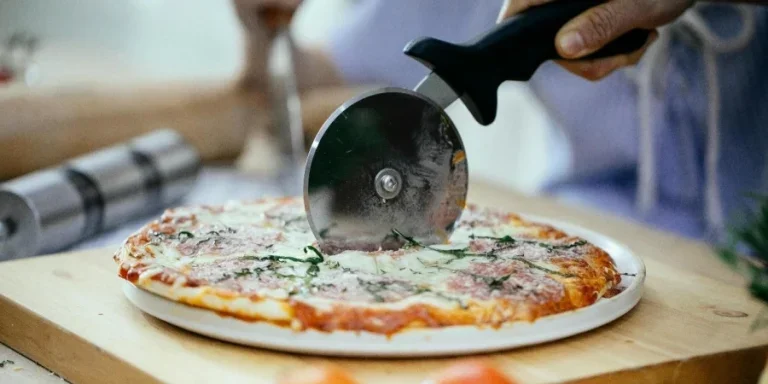The demand for quality pizza tools has surged as more consumers aim to replicate restaurant-quality pizzas at home, fueling a competitive market filled with innovative, specialized equipment. With precise tools like baking steels, peels, and specialized ovens, the industry offers essential products to elevate pizza craftsmanship, making professional results achievable in a home kitchen. For buyers in the culinary sector, understanding current market trends and product distinctions is crucial to meet this growing demand effectively. This article explores top-performing tools, key features, and selection criteria, offering valuable insights into an increasingly lucrative market. Such knowledge empowers professional buyers to make informed, strategic decisions that satisfy evolving customer expectations.
Table of Contents
● Understanding the pizza tools market landscape
● Exploring essential pizza tool types and their unique features
● Key factors to consider when choosing pizza tools
● Conclusion
Understanding the pizza tools market landscape

A thriving market driven by pizza’s global popularity
The global pizza market reached $148.6 billion in 2023 and is projected to grow at a CAGR of 4.45%, reaching $222.5 billion by 2032, according to IMARC Group. The rising home cooking trend and a strong consumer shift toward specialty pizza tools for restaurant-quality results primarily fuel this growth. Demand for pizza tools, including high-heat baking steels, pizza ovens, and quality peels, is expanding, especially among consumers seeking convenience and professional-grade results at home. This market’s momentum is supported by global trends toward Western culinary preferences, alongside the increasing integration of digital and delivery channels for pizza ordering.
Market trends and shifts in demand
Consumers are increasingly opting for high-quality, specialized pizza tools over basic alternatives. Tools like precision baking steels, customizable pizza ovens, and multi-functional accessories are gaining traction as they offer more consistent results and versatile uses in the kitchen. Innovations in pizza ovens, including indoor and outdoor models, further drive demand. The shift towards home kitchen investments has also amplified demand for multi-functional pizza tools offering professional features, such as heat distribution and durable construction, contributing to higher sales among quality-conscious buyers.
Key players and market segmentation
The pizza tools industry is segmented by product types, from baking stones and steels to peels and ovens, with various brands catering to diverse budgets and preferences. Leading brands like Ooni, Breville, and Lodge dominate the mid-to-premium segments, offering products known for durability and high performance. In contrast, affordable brands provide accessible options for casual home chefs.
Exploring essential pizza tool types and their unique features
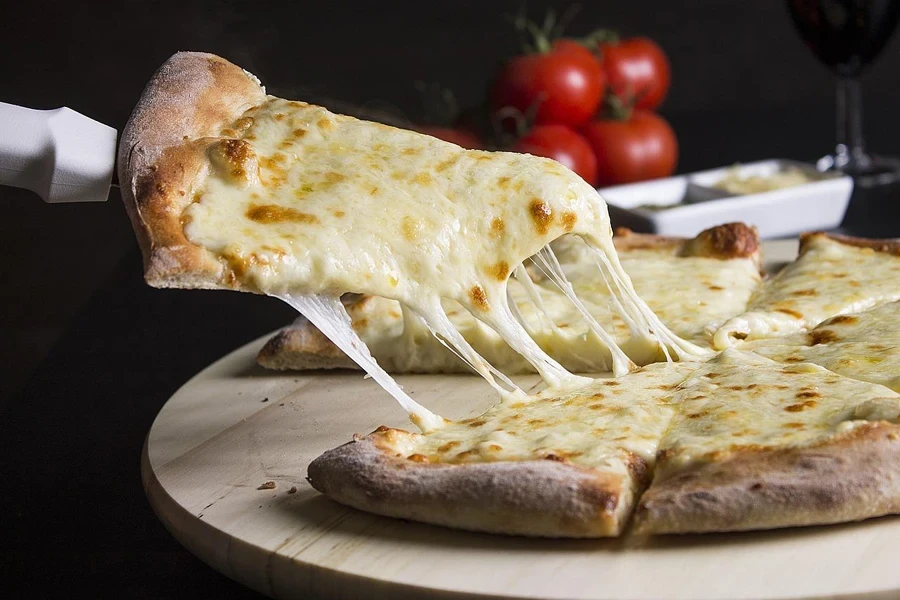
Baking steels and stones: Foundation for the perfect crust
Due to their high thermal mass and conductivity properties, baking steels and stones are fundamental in achieving the right texture in pizza crusts. Baking steels, generally made of solid carbon steel with thicknesses around 3/8 inch, excel in heat retention, quickly absorbing and radiating heat for faster bake times and a perfectly browned crust. These steels typically reach and maintain temperatures over 500°F in standard ovens, allowing for rapid crust expansion and a crisp, airy texture. In contrast, pizza stones, often made from cordierite or ceramic, require longer preheat times due to their lower thermal conductivity but provide a stable, uniform cooking surface that reduces hotspots. These materials absorb moisture from the dough, giving crusts a balanced finish, though they may need additional thermal recovery time between pizzas.
Pizza peels: Essential handling for pizza perfection
Wood and metal pizza peels are designed with different materials and thicknesses to address specific aspects of pizza handling. Wood peels, commonly crafted from acacia or bamboo and measuring around 14 to 16 inches wide, absorb surface moisture from raw dough, preventing sticking. These peels’ rough texture also reduces friction, allowing the dough to slide smoothly into the oven. Metal peels, usually aluminum, are thinner (typically under 1/8 inch), making them ideal for retrieving pizzas without damaging the crust. Advanced metal options include perforated designs to reduce excess flour buildup, minimize burning, and ensure even heat exposure. Specialized turning peels are round and usually measure 7 to 9 inches in diameter, allowing for precise rotation in high-heat ovens to ensure uniform cooking on all sides.
Pizza ovens: From outdoor setups to countertop convenience
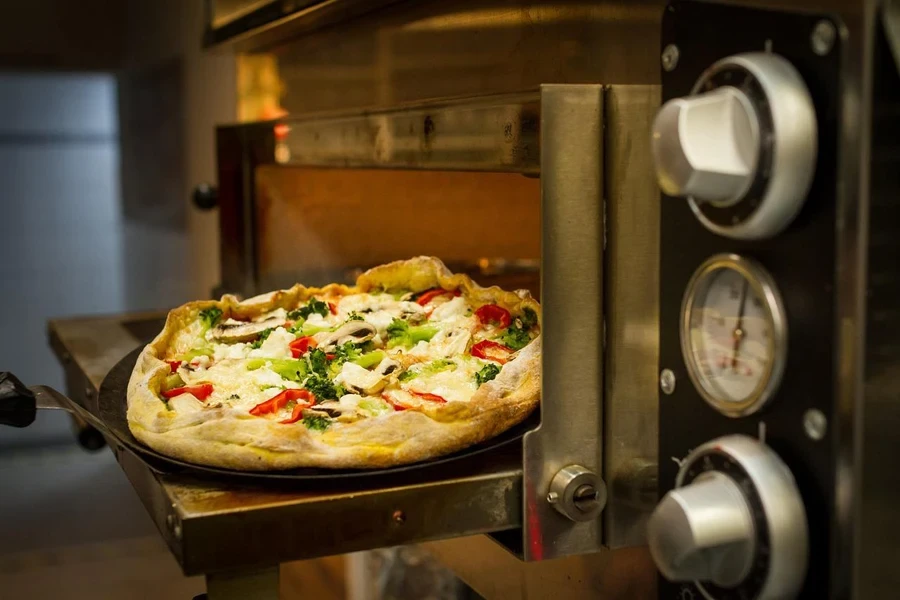
Pizza ovens vary significantly in design, with outdoor models often capable of reaching temperatures up to 900°F or more, ideal for authentic Neapolitan pizza. These ovens may use a multi-fuel system, supporting propane and wood for flavor and cooking style flexibility. Built with refractory brick or advanced ceramic fiber insulation, these ovens maintain high temperatures for extended periods, which is critical for quick, consistent bakes. Countertop models, while typically limited to 600–750°F, use rapid-heating elements and reflective stainless steel interiors to mimic the high-radiant heat of traditional pizza ovens. Many countertop models incorporate custom heating zones or rotating pizza stones, enabling even cooking and efficient energy use. Advanced digital interfaces on some models allow users to select preset cooking modes tailored to specific pizza types, from New York-style to pan pizzas.
Cutting and serving essentials: Rocker blades, wheels, and presentation trays
Rocker blades and wheels offer precision cutting with materials like high-carbon stainless steel or tempered steel for long-lasting sharpness. Rocker blades often measure around 14 inches, matching standard pizza sizes and allowing for single-swipe cuts, making them effective for thick or loaded pizzas. Wheels, typically 3 to 4 inches in diameter, are versatile for varying crust thicknesses, with ergonomic grips that provide control and stability. Presentation trays, usually made of anodized aluminum or heavy-gauge steel, resist warping under heat and allow pizzas to retain heat longer after slicing, making them suitable for family-style presentations and commercial settings.
Additional accessories: Thermometers, proofing boxes, and dough tools
Infrared thermometers, essential for temperature precision, generally measure surface temperatures up to 1000°F with response times under 500 milliseconds for fast reading. Proofing boxes, often made from BPA-free plastic, create controlled environments to support dough hydration and elasticity, typically holding multiple 10- to 12-ounce dough balls with lids that prevent air exposure. Bench scrapers, made of stainless steel with a sharpened edge, facilitate precise dough portioning, allowing bakers to manage high-hydration doughs with minimal sticking and clean up, essential for maintaining an efficient, organized kitchen.
Key factors to consider when choosing pizza tools
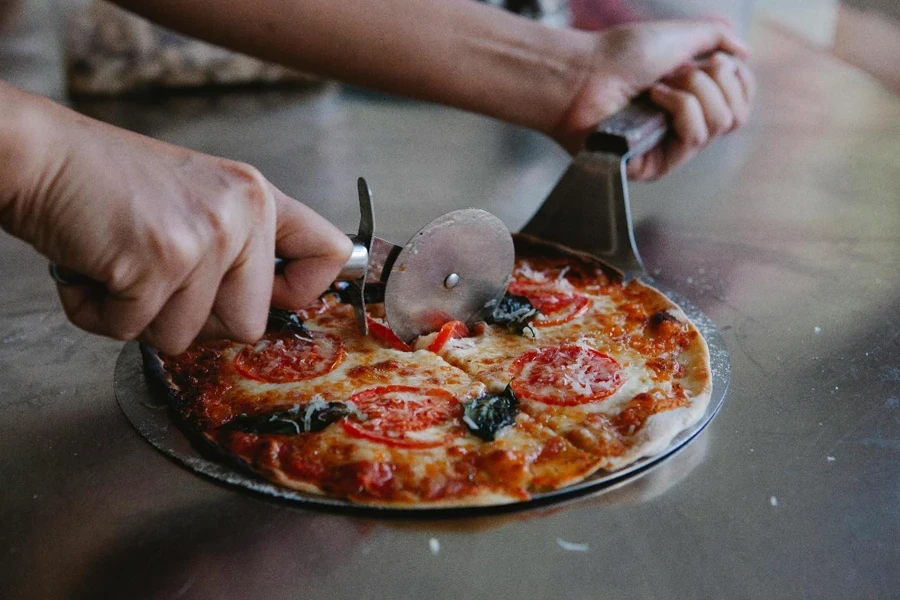
Budget vs. performance: Finding value in pizza tools
Balancing budget with performance is crucial when investing in pizza tools, as high-quality materials often equate to better results and durability. Baking steels, for instance, are commonly made of heavy-duty carbon steel, which offers superior heat retention but typically comes at a higher cost than ceramic stones. Similarly, premium peels crafted from acacia wood or high-grade aluminum ensure better handling and longevity, which is beneficial for frequent users. When considering brand reliability, established names often guarantee durability and consistent quality, which can be advantageous for those who use these tools regularly. More affordable materials like standard wood or lightweight aluminum may suffice for occasional use, providing a balance between performance and cost.
Space and storage considerations
Pizza tools, especially larger items like peels, baking steels, and ovens, require thoughtful storage to maintain an organized kitchen. For compact kitchens, wall-mounted or hanging storage options can keep peels within reach while saving counter and cabinet space. Many pizza ovens, particularly countertop models, are designed to be portable and can be stored in cabinets when not in use. Baking steels, often heavy and dense, can conveniently remain in the oven to aid in heat distribution, reducing the need for extra storage space. Outdoor pizza ovens also offer foldable legs or detachable parts, making them suitable for smaller patios or storage in limited spaces.
Tool versatility and multi-functionality
Versatile pizza tools provide added value, allowing users to perform multiple cooking tasks beyond pizza-making. Baking steels, for example, double as stovetop griddles, supporting high-temperature cooking methods for items like steaks or seared vegetables. Bench scrapers, another essential tool, help with dough management and efficiently clean flour and other residues off work surfaces, streamlining the prep and cleanup processes. Some advanced pizza ovens also offer compatibility with additional cooking accessories, allowing for a broader range of functions, from baking bread to roasting vegetables, making them practical for diverse culinary uses.
Maintenance and care requirements
Proper maintenance of pizza tools is essential to ensure their longevity and performance. Wooden peels, known for their moisture-absorbing qualities, benefit from periodic oiling with food-safe oils to prevent cracking or warping, while metal peels can be hand-washed to maintain their smooth surface. Baking steels require regular reseasoning to maintain a non-stick finish and to avoid rust, which involves applying a light coating of oil and baking it onto the surface. Some tools, like certain cutters and trays, are dishwasher-safe for easy cleaning, but hand washing is often recommended for premium materials to extend their lifespan.
Conclusion
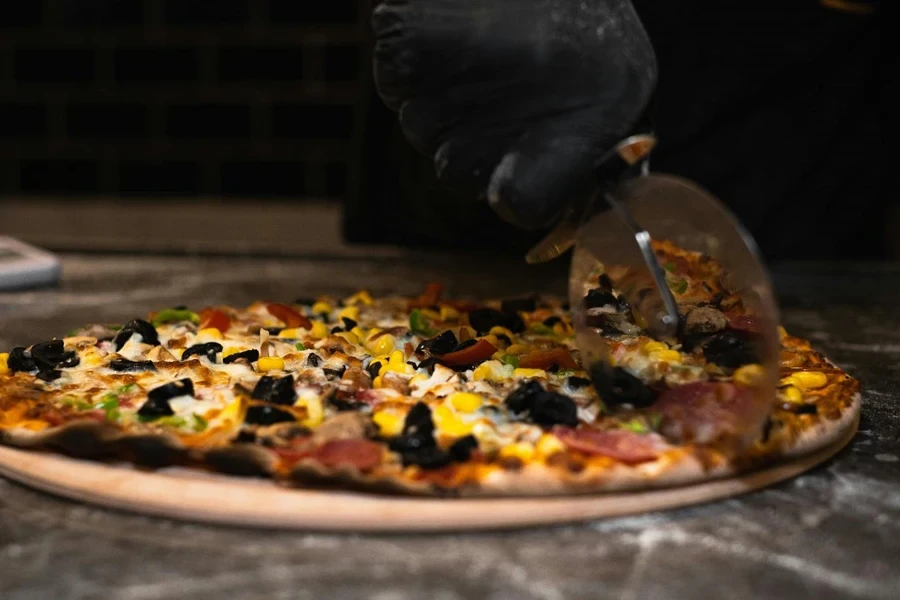
Selecting the right pizza tools is essential for achieving quality results and elevating the home pizza-making experience. Well-chosen tools, from baking steels to precision peels and specialized ovens, allow for better control over texture, flavor, and presentation, bringing professional standards into the home kitchen. Investing in tools that align with specific needs, kitchen space, and usage frequency ensures improved outcomes and greater efficiency and satisfaction in preparation. Equipping a kitchen with reliable, versatile, and easy-to-maintain pizza tools adds long-term value, making it a worthwhile commitment for any culinary setting.
